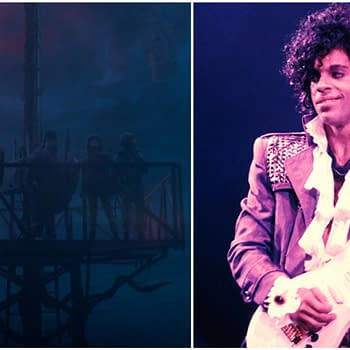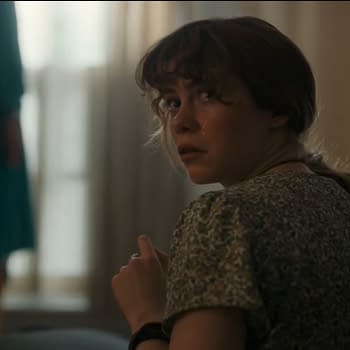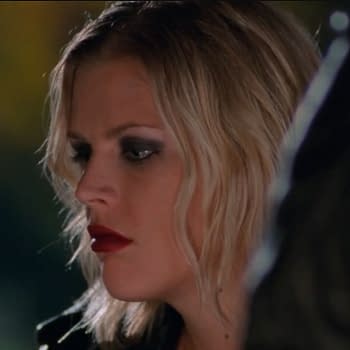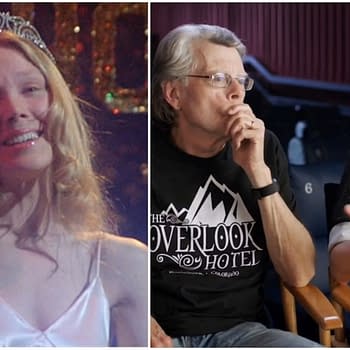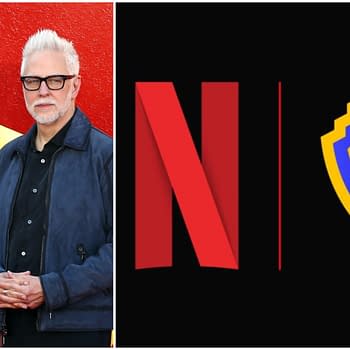Posted in: Exclusive, Horror, Interview, Movies | Tagged: Andrew Cummings, Arno Lüning, Bleecker Street, Chuku Modu, exclusive, interview, Iola Evans, Kit Young, Luna Mwezi, Out of Darkness, Safia Oakley-Green, Stage 6
Out of Darkness Dir Andrew Cummings on Film Debut & Prehistoric Horror
Director Andrew Cummings (Payback) spoke to Bleeding Cool about his latest Bleecker Street prehistoric horror film Out of Darkness.
Article Summary
- Director Andrew Cummings shares insights on his prehistoric horror film, Out of Darkness.
- The film's production involved challenging weather and creative use of a fictional language.
- Inspiration for the movie came from a documentary and Golding's novel 'The Inheritors.'
- Andrew Cummings discusses his transition from television to directing a feature film.
Ever since Andrew Cummings emerged from doing shorts, he's embraced directing shows on British television with the BBC's River City and Clique and ITV's Cold Fee and Payback. His latest challenge is the Stone Age era horror thriller Out of Darkness from Bleecker Street and Stage 6. The film is about a small boat that reaches the shores of a raw and desolate landscape, and a group of six struggle across the narrow sea to find a new home. They are starving, desperate, and living 45,000 years ago. First, they must find shelter and strike out across the tundra wastes towards the distant mountains that promise the abundant caves they need to survive. But when night falls, anticipation turns to fear and doubt as they realize they are not alone. Cummings spoke to Bleeding Cool about developing the screenplay with Oliver Kassman and Ruth Greenberg, casting, developing the film's language, dealing with the elements, and how he prepped for such an ambitious production.
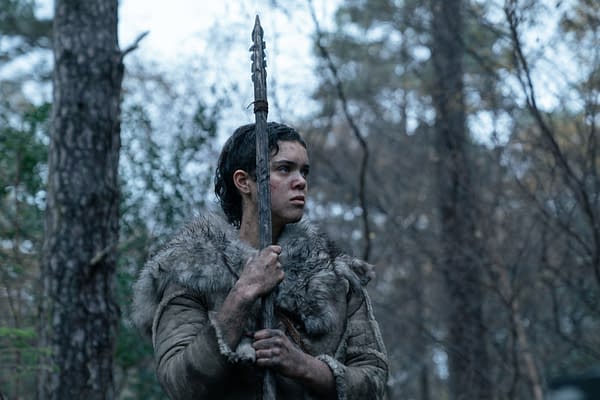
Out of Darkness: A Unique Prehistoric Horror Experience
Bleeding Cool: What's the inspiration behind 'Out of Darkness?'
Cummings: I was finishing film school and saw a documentary about early modern humans, specifically in the UK. I thought it was an interesting time that I hadn't seen much in the cinema. That was the initial idea, and then I read William Golding's follow-up to Lord of the Flies, a book called 'The Inheritors,' which was set in this period and was incredible. I finished that book and felt inspired by the opportunity this period would allow you to talk about humans and all our failures. The idea that our humanity…humans survived because of our inhumanity. The horrible things we do to ourselves and other people. That's an interesting concept. Then I met Oliver Kassman, the producer, and he had an idea about a horror movie set in that period, and that was that. We set off from there.
How did Oliver and Ruth factor into the creative process?
Oliver and I came up with the idea of a prehistoric horror movie. What does that look like? We set out a rough three-page document. This happened, and there are this alpha and beta characters, etc. We didn't even name the characters, so it's a skeletal document. I had been working with Ruth on another script that she had written that was muscular and visual. She loves the genre, so we pitched it to her. We told her, "We've got this little idea. Can you come in and do something with it?" She grabbed onto the possibilities that the period allows. You can say much about the modern instead of a story back then. She gravitated towards it.
The three of us went on a recce around northwest Scotland before she wrote a page or a word of the script to inspire her and feel the grass under her feet. We went on a couple of adventures on that trip, which ended up in the script, so we almost got lost in a fog on top of a high hill. That fog sequence also made its way into the film, but it was slightly different. It was great, and she wrote the first draft within a couple of weeks and got everything out of that. She'd been wanting to talk about violence perpetrated upon women by women and everything around the theme of inhumanity and fleshing out these characters. Then you hunt it from there. It's a constant process of trying to boil it down.
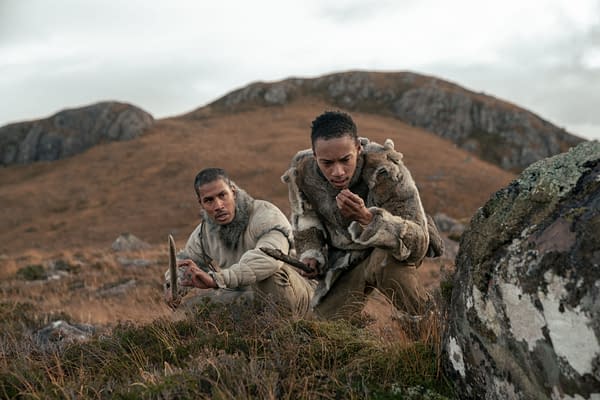
How do you break down the auditioning process, and can you talk about how the cast acclimated to the film's language?
Everybody self-tapes now, so you don't see 300 people in the room anymore. The casting director will get those tapes and filter them down. From the early tapes, we would get people we liked, and I wanted to see how everybody would move because a lot of the time, in these auditions, somebody sits and sits in chairs, you tape them, and they leave. I wanted to get a sense of them physically, so I made a little obstacle course and turned over a desk. They had to crawl under a chair and hunt an imaginary animal that was just a mop handle and bouncy ball or something.
We did the physical stuff and then worked on the fictional language, which we called Tola. We worked on that, and they prepared their scenes, and I would give notes. "Try this" and "Try that," see if they can take my direction, how I direct, and the best people get the parts. Once they were cast, Daniel Anderson, who invented the language of Tola for us, did one-to-one sessions with all the cast on Zoom to make sure there was cohesion, pronunciation, etc. Everybody turned up maybe about four or five days before we started shooting. You do your costume fittings, get in the flow, and do camera tests. It was a concertina process as soon as we got the green light to start prepping, bringing everybody together, and getting everybody up to speed as quickly as possible.
Was there a particular aspect of production where, like maybe, some blocking or elements that were set that were profoundly difficult, or did you just have the same flow throughout?
The weather was challenging. On day two, we were on the back end of the storm spiraling over the Atlantic, and the wind and rain were terrible. Everybody was soaking wet, and the cast ran this fast. Once it gets wet, it also gets cold and heavy. Some of these locations are quite hard to get to your quad bike, so you're walking for a while to get there. These are grueling, and it's not even so much the creative thing of where I put the camera or how I am blocking the scene because I've been working on the script for so long. That stuff was ingrained. It's more stamina and endurance, trying to keep the crew motivated, keeping the cast motivated, and stopping anybody from hurting themselves. You're asking these guys to run across uneven and rocky ground. I don't even know what we would have done if one of the cast members had twisted an ankle. That would have changed things massively, but luckily, everybody was okay. The hardest thing is dealing with the elements and trying to keep everybody on track and feel happy to be at work.
You've been at this for a while. Was there anything from experience that could have prepared you for something like this, or was it something you felt you had to think outside the box?
Apart from my short films, I'd done television for a few years before 'The Origin' [film's alternate title]. Endurance helps to know that you can shoot something for six, seven, or eight weeks and get through it. This is massive, making that jump from shorts to longer lengths. Doing television for a while and the time pressure when the sun's going down, you've got to get these five shots to tell the story, and you don't have time for five shots. Okay. What shot do I get? Being able to think on your feet and change your blocking so that, for example, instead of getting five shots on the scene, if I only got time for one shot, how can I move the actors towards the camera and block it in a way that I can tell the whole story in one shot?
One developing shot instead of getting shot coverage, and sometimes that makes for a more compelling scene and shot because the actors are bouncing off each other more. You're not trying to manipulate it in the edit. It can be quite a knuckle, seat-of-your-pants stuff. You're not sure; maybe I should have got a reverse or something to help me in the edit, but being on television enables you to trust your gut more and know how to do things economically to help you make your days. That's the main takeaway: if I had jumped from shorts to feature, I would have lost that practice.
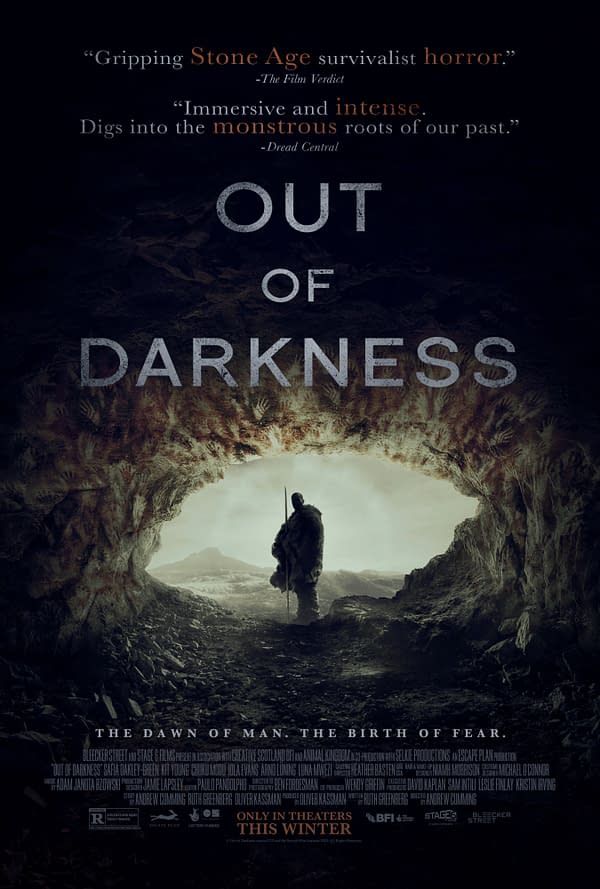
Out of Darkness, which stars Safia Oakley-Green, Kit Young, Chuku Modu, Iola Evans, Arno Lüning, and Luna Mwezi, is in theaters on February 9th.







![Stranger Things: Lingering Questions Following the Finale [SPOILERS]](https://mlpnk72yciwc.i.optimole.com/cqhiHLc.IIZS~2ef73/w:350/h:350/q:75/rt:fill/g:ce/https://bleedingcool.com/wp-content/uploads/2026/01/StrangerThings_S5_0728_R.jpg)
